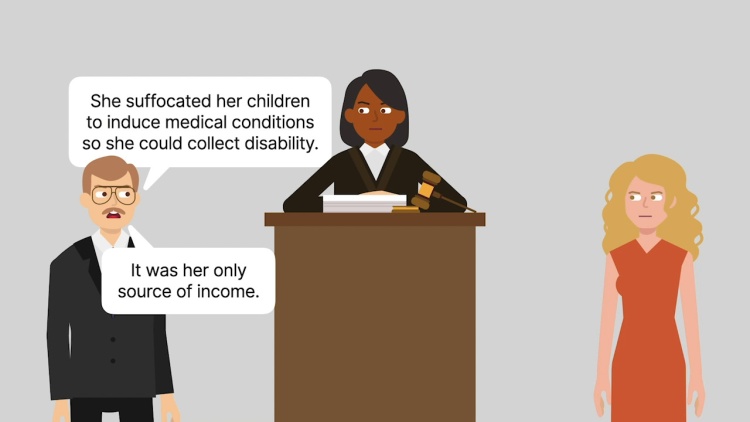People v. Snyder
New York Supreme Court, Appellate Division
937 N.Y.S.2d 429, 91 A.D.3d 1206 (2012)
- Written by Samantha Arena, JD
Facts
The State of New York (plaintiff) charged Brenda Snyder (defendant) with depraved-indifference murder in connection with the death of her young daughter. At trial, the state attempted to prove that Snyder purposely suffocated her children to cause breathing problems in order to collect government disability benefits. Physicians, social workers, and others who interacted with Snyder’s family testified about various incidents that raised suspicion that Snyder was purposely suffocating her children. Each time the Snyder children were admitted to the hospital with breathing-related complaints, results tended to indicate that the children’s airway blockages were caused by some external force. In January 1996, a home health nurse arrived at Snyder’s house and found that Snyder’s daughter had stopped breathing. The nurse called an ambulance and asked Snyder to help in the attempt to resuscitate the child, but Snyder refused. Snyder’s daughter died days later. The medical examiner determined that the manner of death was consistent with homicide. Further evidence presented at trial indicated that the benefits Snyder collected because of her children’s conditions were her sole source of income and that the children’s apnea episodes often coincided with points at which Synder’s eligibility for benefits was under review. In 2001, a jury convicted Snyder. Snyder appealed, contending that the evidence was insufficient to establish the requisite mens rea for depraved indifference murder.
Rule of Law
Issue
Holding and Reasoning (Garry, J.)
What to do next…
Here's why 899,000 law students have relied on our case briefs:
- Written by law professors and practitioners, not other law students. 47,000 briefs, keyed to 994 casebooks. Top-notch customer support.
- The right amount of information, includes the facts, issues, rule of law, holding and reasoning, and any concurrences and dissents.
- Access in your classes, works on your mobile and tablet. Massive library of related video lessons and high quality multiple-choice questions.
- Easy to use, uniform format for every case brief. Written in plain English, not in legalese. Our briefs summarize and simplify; they don’t just repeat the court’s language.





